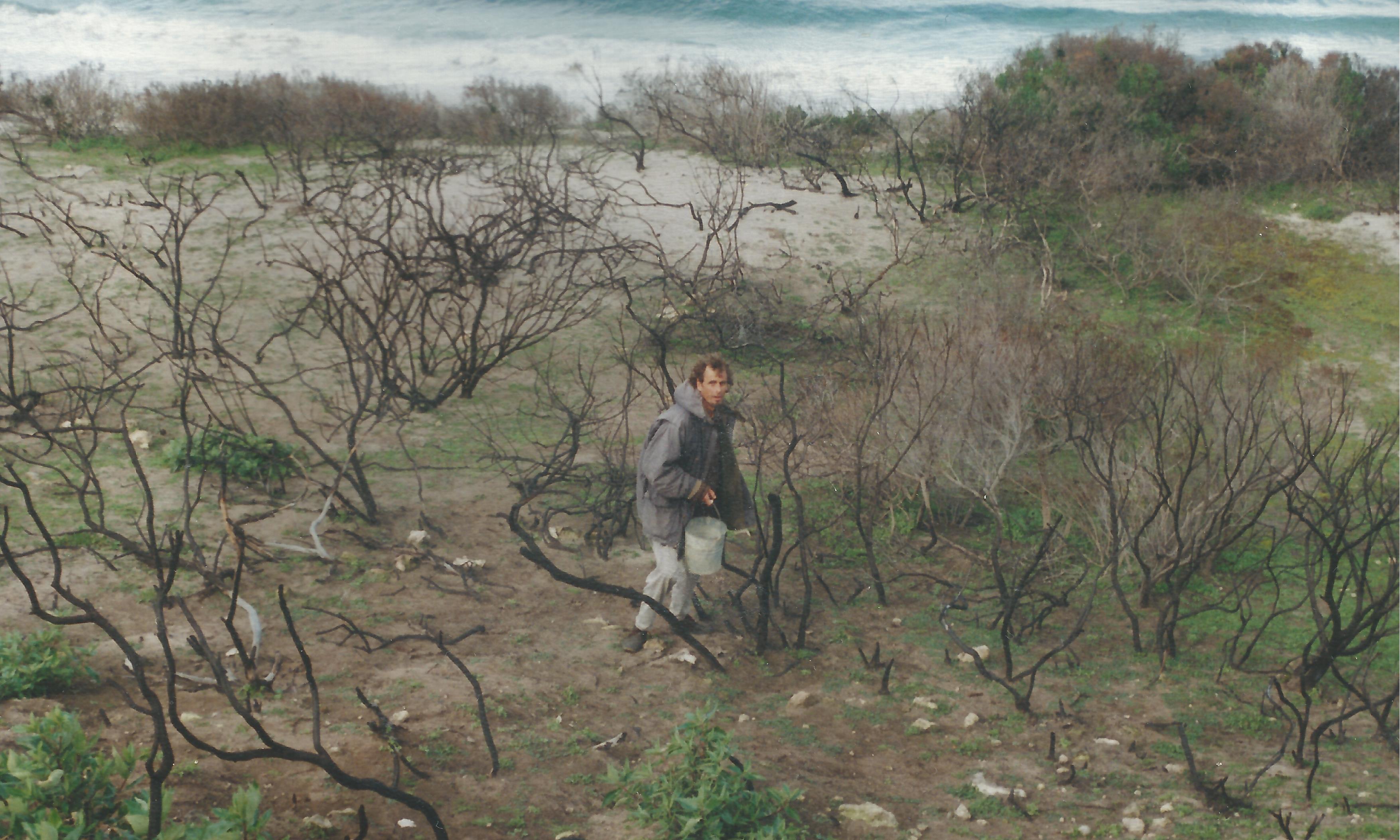D'Estrees Bay Self Guided Drive
Stop 8 - Sewer Beach
The area around the Sewer Beach is an excellent location for finding coastal plants.
Common Boobialla (Myoporum insular)
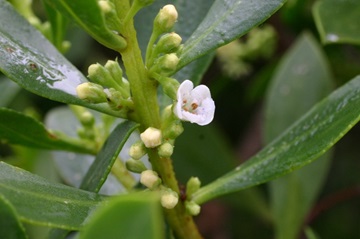
This plant is commonly found in coastal sand dune. The foliage is fire resistant and the leaf litter minimal. Tammar wallabies often browse on this shrub, even standing on their hind legs to reach the higher branches
Coast Daisy-bush (Olearia axillaris)
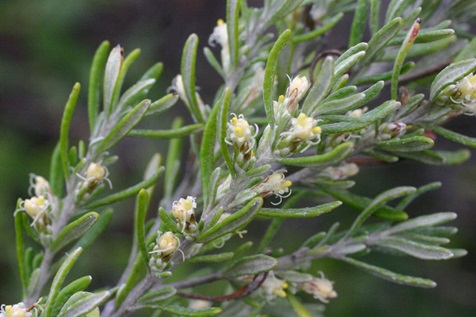
This common grey-green aromatic coastal plant acts as a sand binder. The underside of the leaves are white and wooly. Strongly scented inconspicuous flowers appear between February and April and the seeds are dispersed by wind.
Kangaroo Island Spyridium (Spyridium halmaturinum var halmaturinum)
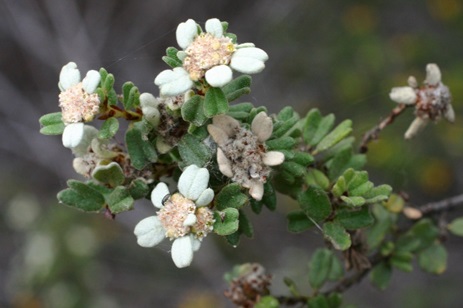
Spyridium is from the Greek spyridion, meaning a little basket alluding ti the tiny white flowerheads. The white petals surrounding the flower are actually floral leaves designed to attract pollinating insects to the otherwise unappealing flower. Halmaturinum means island. This plant is endemic to Kangaroo Island.
Slender Honey-myrtle (Melaleuca gibbosa)
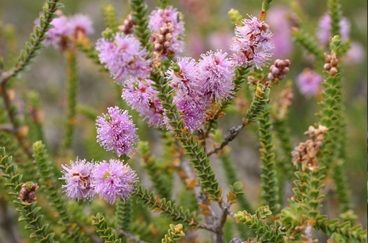
The slender honey-myrtle is widespread in both coastal and swampy areas. In late spring and summer pink and mauve flowers that cluster on the stems look like mini bottlebrushes
Coast Beard-heath (Leucopogon parviflorus)
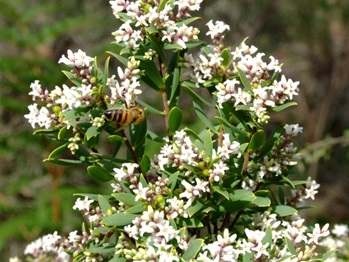
This shrub is know locally as native currant for the edible white berries it produces in summer. The single seed is surrounded by juicy flesh which many birds find palatable. At fruiting time it is common to see flocks of Silver Gulls hovering above the shrubs, plucking off the berries.
Dryland Tea-tree (Melaleuca lanceolata)
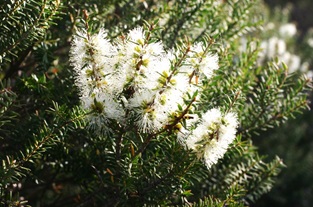
In such exposed site dryland tea-trees hug the ground, much reduced in size by the salt laden winds. Away from the coast they form large shrubs with a dense canopy which provides wallabies with cover from the cold, wind and rain.
Coast Cushion Bush (Leucophyta brownie)
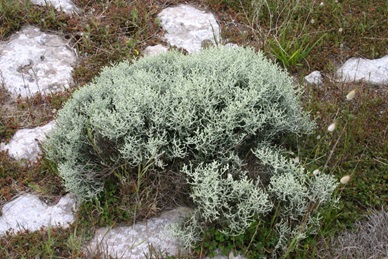
The dense rounded Coast Cushion Bush is often found facing the sea on cliffs and dunes. Leucophyta means white leaves. The tiny leaves that are pressed against the white stems are covered with a mass of white hairs, giving the bush it silvery appearance.
Sea Spurge (Euphorbia paralias)
Originating in the Mediterranean region, Sea spurge has become a weed of coastal sand dunes in Australia. Herbs fro the Euphoria family have a poisonous milky sap in the stems and leaves, that is a skin irritant.Sticky Goodenia (Goodenia varia)
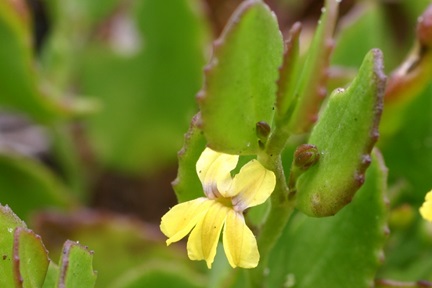
This shrub grows to waist high in mallee and coastal areas and flowers for much of the year. The lime green leaves are round and thick and the new growth is often sticky.
Round-leaf Correa (Correa backhouseana var orbicularis)
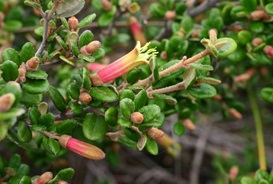
The round leaved subspecies s endemic to Kangaroo island. The tubular bell shaped flowers face the ground in the winter allowing rain to run off. However in summer the bells invert to face the skiy to allow easier fertilization by birds such as honeyeaters as they search for nectar.
Drooping Velvet-bush (Lasiopetalum schulzenii)
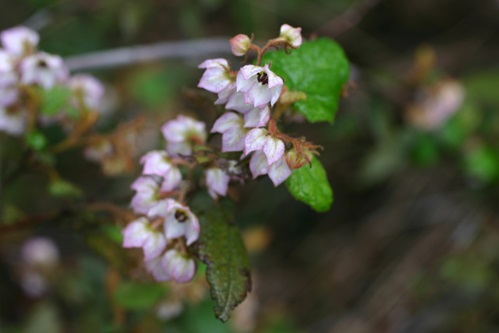
Lasiopetalum means hairy petal, but on this plant the drooping heart shaped leaves are also hairy. This plant grows on a range of soils and is therefore found in many different habitats on Kangaroo Island.
Coast Velvet-bush (Lasiopetalum discolour)
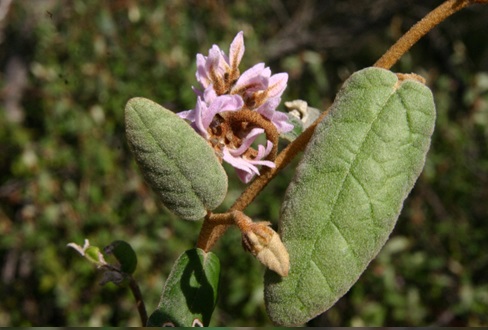
The dense leaves of this shrub are rusty colored on their undersides. Pale pink flowers with hairy insides appear from winter to early summer.
Friends of Cape Gantheaume Activities
Following the 1996 Cape Gantheaume Fire, the Friends of Cape Gantheaume teamed up with the local surfing community to collect broken glass that had been uncovered by the fire. In all a total of 4 large drums were collected.
